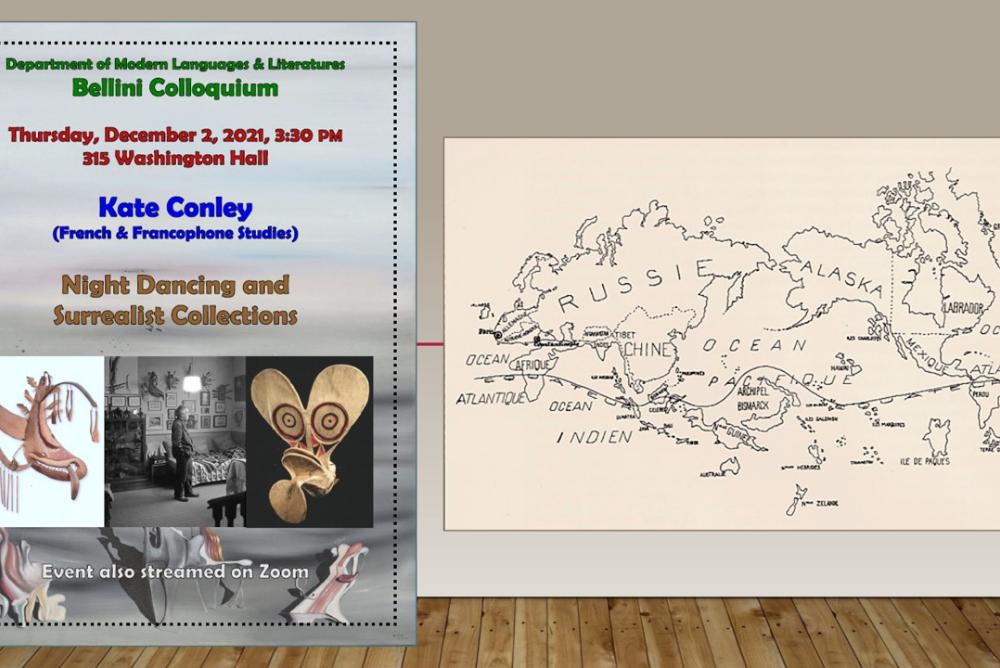Reves Center for International Studies Events
[PAST EVENT] Bellini Colloquium - Dept. Modern Languages and Literatures

MLL Bellini Colloquium
Kate Conley - Night Dancing and Surrealist Collections
Event will be held in person and streamed on Zoom.
When the surrealists began publishing images of Oceanic and Native American objects in their journal, La Révolution surréaliste, they juxtaposed automatic texts with masks from New Guinea and a Hopi katsina figure, created for dancing rituals of mourning, initiation, and propitiation. This paper will explore the importance of dancing in the surrealists’ attraction to the indigenous things they collected and admired for the community-building role those things had, which, for the surrealists, served as confirmation of the importance of their own community-building activities. Under the leadership of André Breton, author of the two Manifestoes of Surrealism, the surrealists created a new map of the world in 1929, which shrank Western Europe and the United States and expanded the Pacific Northwest Coast and the Pacific Islands, both regions from which the objects they collected came. In particular, the Baining Kavat masks, reproduced in the June 1926 issue, and the Yup’ik masks Breton purchased in New York in 1943, were made for night dancing. Both dancing and surrealist community-building activities (such as group automatic practice at the movement’s outset), which occurred in the dark at night, and the games they played after dinner throughout Breton’s life involve dream-like, trance-like states of mind, allowing for the merging of the unconscious mind with conscious awareness in a way that Breton’s 1924 definition of surreality had predicted: “the future resolution of these two states, dream and reality into a kind of absolute reality.” Long invested in researching the objects he collected, Breton had acquired deeper knowledge of the indigenous objects he continued to seek out throughout his life by the 1940s. That knowledge included greater understanding of the community-building function that dance played and its correlation with how he saw surrealism as founded in collective, communal commitment and creative work.
Kate (Katharine) Conley is a professor of French & Francophone Studies at William & Mary and Chancellor Professor of Modern Languages & Literatures. She publishes on the surrealist movement, most recently on surrealist collections. Her most recent book is Surrealist Ghostliness (Nebraska UP, 2013). She has chapters in two forthcoming Cambridge University Press volumes on surrealism, “Surrealist Collections in Paris and Sussex” in Cambridge Critical Concepts: Surrealism, edited by Natalya Lusty (2021), and “Autobiography” in The Surrealist Novel, edited by Anna Watz (2022) and a short essay on “« Délicieux présent » : le quotidien de Desnos “ in L’Étoile de mer (2021).
Contact
Michael Leruth, mfleru@wm.edu
